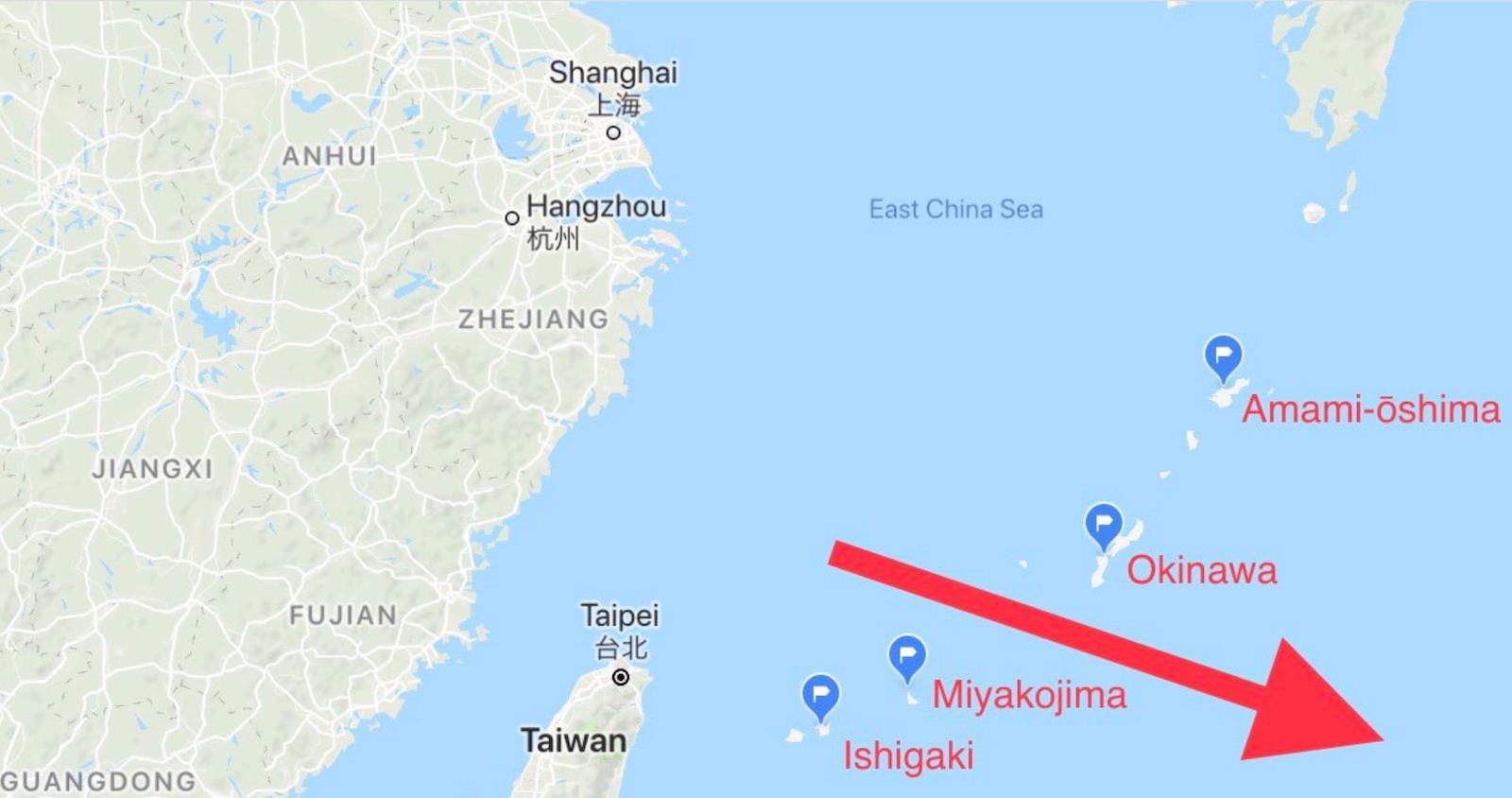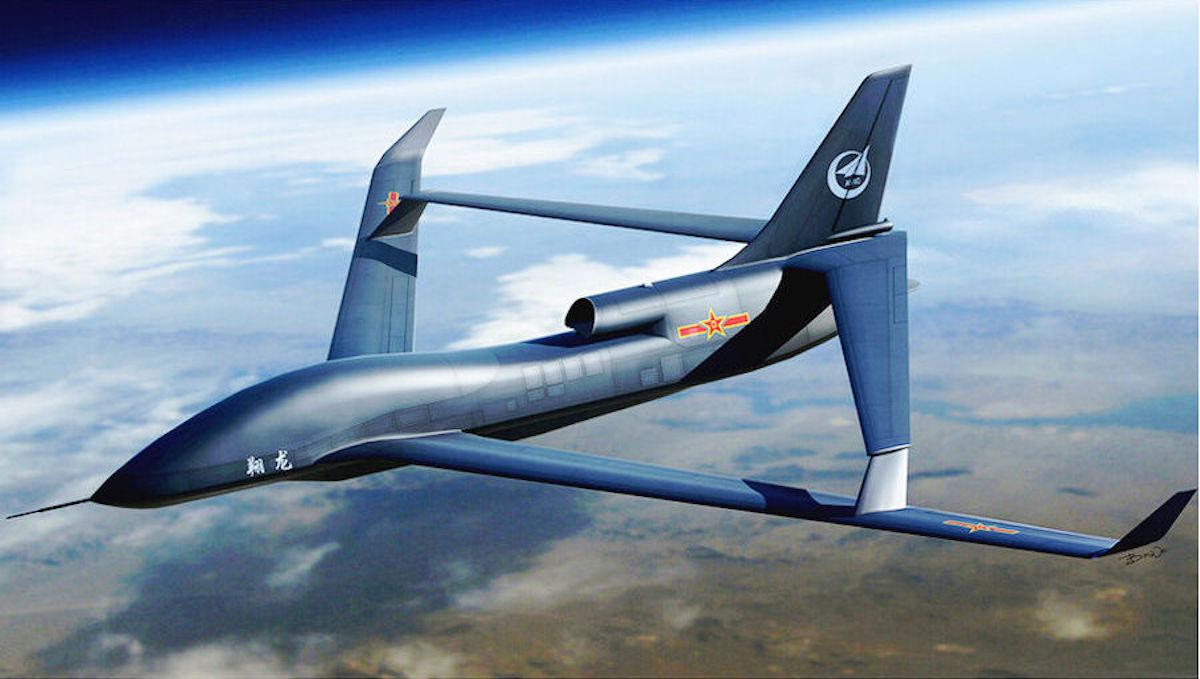(MENAFN- Asia Times) China is provocatively upping the ante of its drone operations over the contested East China Sea, bringing it into more frequent aerial confrontations with neighboring and remilitarizing Japan.
This week, Japan's Ministry of Defense (MOD) disclosed that Chinese WZ-7 surveillance unmanned aerial vehicles (UAV) appeared over the East China Sea on January 1 and 2, prompting Japan to scramble its F-15J fighters in response, according to a The Warzone report .
China's WZ-7s have a 23-meter wingspan, an operational ceiling of 18,000 meters and a cruise speed of 750 kilometers per hour, according to an asia military review article. The report speculated that the WZ-7 has a range of 7,000 kilometers while carrying a maximum payload of 650 kilograms.
One WZ-7 flew into the East China Sea on January 1, passing between the Japanese islands of Okinawa and Miyakojima, according to the japanese mod statement. After flying south of the Sakishima Islands, the UAV reversed course and flew between Okinawa and Miyakojima before returning to the East China Sea, the statement said.
japan's mod also said China's Liaoning aircraft carrier passed through the Miyako Strait on the same day accompanies by the Anshan and Wuxi Type 055 cruisers, the Type 052D destroyer Chengdu, the Type 054A frigate Zaozhuang and the Type 901 fast combat support ship Hulunhu. On January 2, another WZ-7 flew an identical path as the previous day's incursion, Japan's MOD said in another statement .

Flight path of China's WZ-7 drone intrusion into Japanese territory. Image: Google Maps
At an operational level, the UAV deployments may aim to provide intelligence, surveillance and reconnaissance (ISR) support to China's naval deployments off Okinawa and Miyakojima.
asia times previously reported on China's December 2022 carrier battlegroup exercises in the same waters, led by the carrier Liaoning and escorted by the Type 055 cruiser Lhasa, Type 052D destroyer Kaifeng, Type 903 replenishment ship Taihu, and hull number 796 electronic reconnaissance vessel. The flotilla entered the Western Pacific on December 16, 2022, passing by Okinawa and through the Miyako Strait.
China's deployments may also aim to supplement carrier battlegroup deployments for power projection purposes. in the 2019 book unmanned aircraft systems in the cyber domain: protecting usa's advanced air assets , Randall Nichols and other writers note that the People's Liberation Army-Navy's (PLA-N) then-inventory of S-100, ASN-209, BZK-005 and GJ-1 UAVs was unable to launch from carriers, thus limiting them to land-based operations.
They noted that the Austrian-made S-100 rotorcraft drone is capable of vertical take-off and landing (VTOL), which allows it to operate from ship decks. They also noted that China has opted to launch UAVs instead from their occupied features in the South China Sea and military bases adjacent to the East China Sea.
However, China may now possess UAVs capable of operating from its carriers. in june 2022, the south china morning post (scmp) reported that China's second carrier, Shandong, was spotted with fixed-wing UAVs on its flight deck during a scheduled maintenance refit.
that same month, china's state mouthpiece global times mentioned that the UAVs seen on the Shandong lack long-flight range capabilities but can still enhance the carrier and its battlegroup's situational awareness in search and reconnaissance missions.
Large UAVs like the WZ-7, on the other hand, can provide long-range maritime surveillance that China's carrier-based UAVs apparently still cannot.
The UAV flights may also be a response to Japan's new plan to deploy long-range missiles on the Nansei Archipelago, encompassing Okinawa, Miyakojima, and the Sakishima Islands. Moreover, China's recent UAV overflights may be reconnaissance missions to map out potential locations for missile batteries that can threaten Chinese warships in the waters.
Yet another possibility is that they aim to test and measure Japan's response to frequent incursions. asia times previously reported on China's aerial attrition strategy against Japan, which aims to inflict losses by forcing an unsustainable tempo of operations, resulting in miscalculation, accidents, accelerated aircraft wear and tear, pilot and ground crew fatigue, and strained maintenance and logistics.
At the strategic level, China's rising UAV deployments aim to strengthen its hand over Japan and Taiwan and gain information superiority over the US and its allies if conflict breaks out in the East China Sea.
in a june 2020 article in the peer-reviewed international journal of china studies , Wonjune Hwang wrote that expendable and low-cost characteristics of UAVs such as the WZ-7 allow China to undertake more audacious ISR missions over disputed maritime territories. Hwang notes that similar previous tensions between China and Japan involving UAVs have set a precedent for sparking a more significant conflict.

China's WZ-7 drone. Photo: Facebook
He notes that the Japanese government announced in 2013 new rules of engagement whereby any UAV intruding into Japanese airspace would qualify as a target if it refused to leave. China responded in kind that any Japanese interception of its UAVs could be considered an act of war.
Hwang also notes that China uses UAVs to spy on Taiwan, including ISR missions on fixed and mobile targets. He also says that China could use UAVs to shadow US warships conducting patrols in the Taiwan Strait.
Most tellingly, Hwang cautions that China's aggressive use of UAVs in the East China Sea could spur Japan and Taiwan to acquire their own long-range UAVs, conferring the same advantages but bringing the same risks of sparking escalation or a drone arms race.
in march 2022, japan received the first of three rq-4b global hawk uavs , which are roughly in the same long-range category as China's WZ-7.
Taiwan has also been developing UAVs for ISR and combat purposes. asia times previously reported on Taiwan's UAV projects, including the Teng Yun 2 armed UAV, Albatross and Cardinal ISR UAVs and Teng Yun and Chien Hsiang loitering munitions.